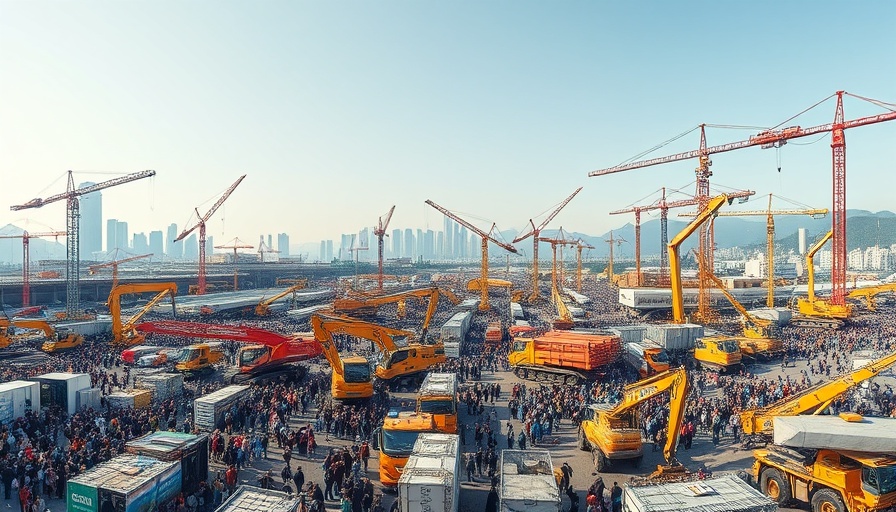
The Rising Influence of AI in Construction
Artificial Intelligence (AI) is revolutionizing numerous industries, and construction is no exception. Companies like Skanska USA are leading the way in adopting AI tools to enhance safety and efficiency on job sites. Anita Nelson, Chief Strategy Officer at Skanska USA, highlights the importance of a careful introduction of these technologies, suggesting that professionals should 'walk before they run.' This approach emphasizes that starting small and gradually expanding the use of AI can lead to more effective outcomes.
Introducing Skanska's Safety Sidekick
One of Skanska's notable AI offerings is the Safety Sidekick, a tool designed to provide immediate access to safety data and job site conditions. By leveraging generative AI, this tool allows workers to ask safety-related questions via mobile or desktop, enabling them to receive real-time support when planning discussions around safety practices. The Safety Sidekick acts not only as a source of information but also as a proactive partner for workers, helping them maintain a steady focus on safety.
Why Starting Small Matters
Nelson's insights reveal multiple advantages to a phased implementation of AI in construction. When introducing technologies like the Safety Sidekick, construction firms can assess their practicality and effectiveness without overwhelming employees. This incremental approach allows teams to learn and adapt to new technologies, minimizing disruptions while maximizing safety benefits.
Real-Time Data: A Game Changer
The ability to access real-time data is what sets the Safety Sidekick apart from traditional methods. Nelson underscores the need for immediate and actionable insights on job sites. Under the old model, safety data often sat in silos and was not utilized until issues arose. By shifting to a more integrated system with AI tools, companies can preemptively address safety concerns, nurtured by ongoing monitoring and feedback.
The Broad Applications of AI in the Industry
While the Safety Sidekick targets worker safety specifically, AI's broader applications in construction are noteworthy. From project management to risk assessment, AI technologies can streamline operations, predicting delays and budget overruns before they occur. Various companies are experimenting with AI for tasks ranging from equipment monitoring to predictive maintenance, indicating a growing trend that could reshape the landscape of construction.
Challenges with AI Adoption
As with any technology, challenges remain in the adoption of AI within construction. Concerns regarding data privacy, the skill gap among workers, and the initial cost of implementation can deter some firms. However, many experts believe that the long-term benefits of increased safety, efficiency, and cost savingsFar outweigh these initial hurdles.
Future Predictions: The AI Landscape in Construction
The future of AI in the construction industry is bright. With companies like Skanska paving the way for responsible and effective implementation, it's likely we will see a surge in the adoption of similar technologies. Future advancements may include even more sophisticated AI tools that can analyze vast amounts of data across various projects, offering predictive insights that will further allow construction teams to enhance safety, efficiency, and overall project outcomes.
What Contractors Need to Know
For contractors considering integrating AI into their operations, several key takeaways emerge from Skanska’s approach. First, start small. Don’t rush to overload your team with new technologies. Secondly, focus on applications that will have a clear and direct impact on safety and efficiency. Finally, invest in training your team to ensure they feel confident and capable when using new tools, thereby enhancing overall satisfaction with the technology.
In conclusion, as technology advances, so too does the construction industry. The thoughtful implementation of AI—starting with tools like Skanska's Safety Sidekick—signals a move towards a safer, more efficient future for all in the field. By understanding the delicate balance between innovation and practicality, contractors can navigate this transformative period successfully.
 Add Row
Add Row  Add
Add 






Write A Comment